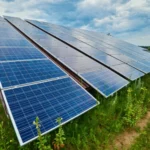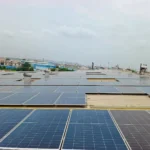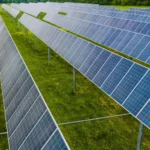Complete Guide to Solar Panel Subsidy Scheme in Haryana
Complete Guide to Solar Panel Subsidy Scheme in Haryana
About Solar Panel Subsidy
The Haryana Department of Renewable Energy has initiated a program to conserve resources by implementing a solar rooftop power plant. Solar System Plants are provided to every residential, institutional, social sector, and the private, commercial, and industrial sector in the state under this solar panel subsidy scheme. People understand the benefits of solar and its importance, but they are not ready to install solar panels in their homes or businesses as they find it expensive.
For this very reason, the Haryana government announced a solar panel subsidy that will be given on the purchase of solar panels or solar systems. The goal of this solar policy is to promote cost-effective green alternatives.
Haryana Solar Panel Subsidy Scheme 2022
Have trouble keeping up with rising electricity costs? Now you can generate your own electricity and sell it at a set price. It may sound absurd, but the government is providing such services to the public. The Department of Renewable Energy has begun the Grid Connecting Power Plant Scheme. Solar plants will be installed on the rooftops of buildings to generate electricity. The government would also provide a 30% subsidy for plants that cost less than 20 thousand rupees per kilowatt. Selling electricity units generated by solar power back to the power company can save you a lot of money each month. The electrical company will compensate you for the units you provided. 6–7 rupees per unit fixed pricing.
The objective of the Haryana Solar Panel Subsidy 2022
The Indian Ministry of New and Renewable Energy (MNRE) has introduced a number of Central Financial Assistance (CFA) initiatives to encourage the use of solar energy in India and help the country reach its goal of 100 GW of installed capacity. For this very reason, the government grants solar panel subsidies to businesses that contribute to the growth of the country through this program. This solar panel subsidy is only for the institutional, residential, and social sectors, not for commercial, industrial, or public-sector businesses. According to the Ministry of New and Renewable Energy (MNRE), the Central Government pays 30% of the benchmarked installation cost for roof PV systems, which is limited to some states, whereas special category states in the north, such as Uttarakhand, Himachal Pradesh, Jammu & Kashmir, and Uttar Pradesh, receive a 70% subsidy on benchmark installation costs.
Advantages of Solar Installation in Haryana
- You can save 90% on your electricity costs.
- 25-year lifespan
- Payback period less than 5 years
- There is no need for upkeep.
- The cost per KW ranges between 60000 and 75,000 rupees.
- Additional incentives on total solar energy generated in electricity bills of up to 1.1.00 per unit.
- Use the net-metering function to feed the surplus solar energy into the grid.
- 1500 units can generate KW of electricity every year.
Eligibility for Haryana Solar Panel Subsidy 2022
The candidate must be a Haryana resident to be eligible for the scheme. This plan will be applicable to the residential, institutional, social sector, private, commercial, and industrial sectors.
Required Documents for the Application
- Proof of Identity (Any One) – Pan Card, Passport, Voter Card, Aadhaar Card, Driving license, etc.
- Residence / Address Proof – Aadhar Card, Tax deduction account number, etc.
- Site Address Proof – Electricity bill.
- For Other Than the Residential Area – Registration Certificate, Proof of being an institution / social organization.
How to Apply for Haryana Solar Panel Subsidy 2022
Step up 1: Visit Renewable Energy Department Haryana / Haryana Renewable Energy Development Agency (HAREDA). You can check the website here.
Step up 2: Sign up for the Haryana Solar Panel Subsidy by creating a username and password.
Step up 3: After signing up, click on APPLY.
Step up: Fill up all the necessary details and submit your documents in the nearest office.
Important Things to Know:
- Space Requirement 10 Sq.mt. /Kwp
- No Application fee is required when applying for the installation.
- No permission is required from HUDA for installation.
- Subsidy is available on a grid-connected system.
- The solar panel should be made in India.
Suggested Articles

Net Metering and Its Advantages Explained: How Solar Users Save More on Energy Bills
Learn what Net Metering and its advantages mean for you—cut electricity costs, earn energy credits, and boost solar efficiency easily.

Improve Your Power Factor After Solar Installation: Complete Guide
Power factor after solar installation often fluctuates due to system design and load patterns. Learn the key causes, challenges, and solutions for better efficiency.

Solar Savings Made Simple: Know Your Cost Cuts in 2025
Maximize your solar savings in 2025. Learn how solar energy reduces electricity costs for homes and businesses.

How to Improve Energy Efficiency and Save Electricity Costs
Learn how energy conservation and efficiency can help you save electricity, cut costs, and make your home or business more sustainable

Net Metering and its Advantages
Net Metering allows solar panel owners to feed excess electricity back to the grid and earn credits, reducing energy bills. Learn the key advantages of net metering for homes and businesses.

Everything You Need to Know About Net Metering
Discover everything about net metering – how it works, benefits, installation process, and how it helps you save on electricity bills.

6 Innovative Applications of Solar Energy You Should Know About
Explore how solar energy is revolutionizing daily life and industries. From solar-powered transport to smart cities, discover six groundbreaking solar applications shaping a cleaner, smarter future.

SECI Sets Record in Renewable Energy Trading, Surpasses ₹100 Billion
SECI achieves record renewable power trading revenue surpassing ₹100 billion, marking a milestone in India’s clean energy growth and solar market expansion.